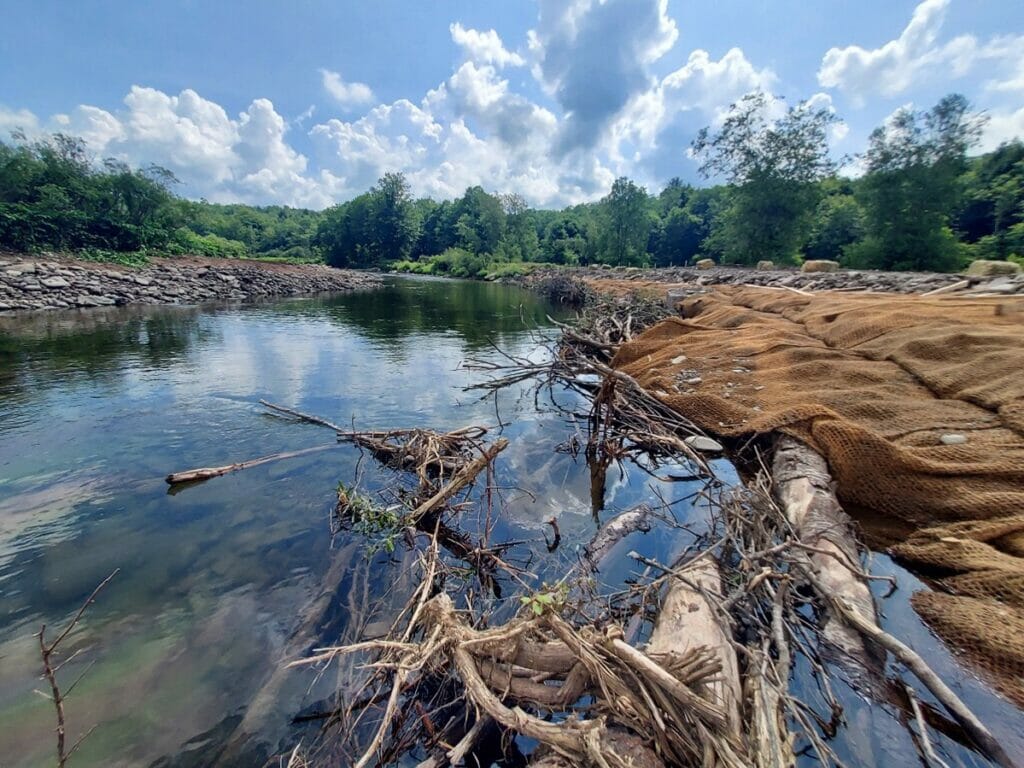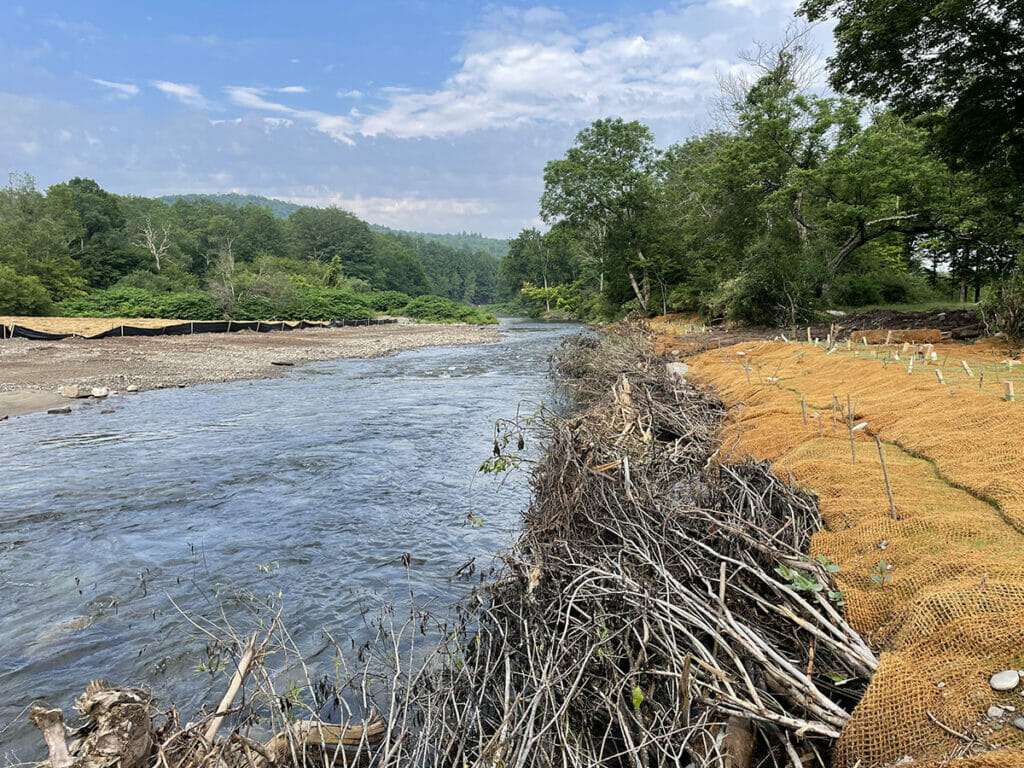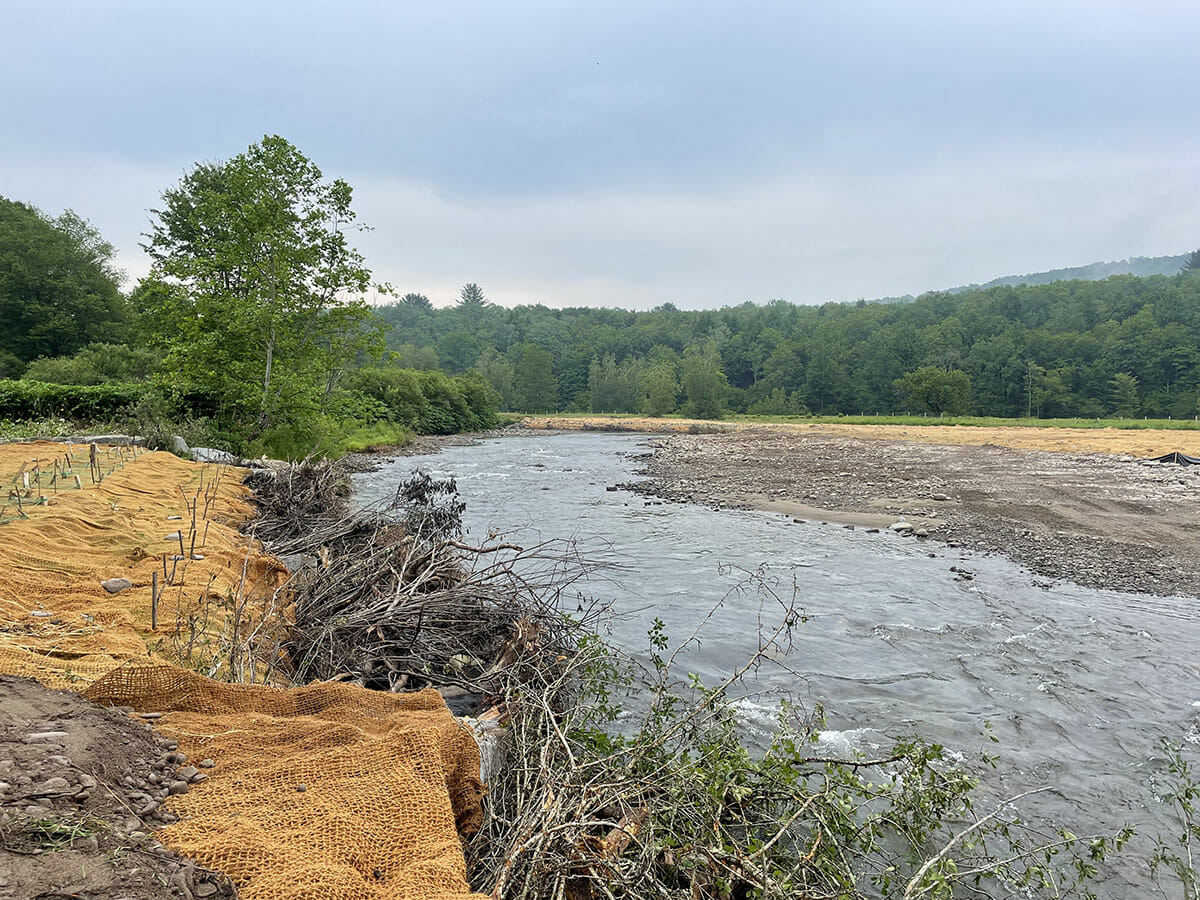Trout Unlimited has been actively working to improve trout streams in the Catskills since the late 1950s and shows no signs of stopping.
In partnership with the town of Rockland and Friends of the Upper Delaware, Trout Unlimited staff have begun survey assessment work to better understand the current conditions and challenges facing Willowemoc Creek and supporting tributaries.
This survey team, led by TU’s Kyle Glenn, is collecting vital information on river conditions, barriers to aquatic passage, macroinvertebrate populations, and overall habitat conditions found in the watershed. Data collected during these surveys will be compiled to inform local improvement opportunities and made available for review by the public in the seasons ahead.

In addition to survey work, TU’s restoration staff has recently completed a large-scale restoration project on a historic stretch of the Willowemoc in Debruce. TU staff — supported by US Fish and Wildlife Service, a private landowner and lead contractor JB Excavation, made a timely repair to a rapidly eroding streambank.
This design included the use of large wood installations, as shown above, to be anchored deeply into existing bank and used as a natural buffer to slow the distribution of heavy flows.
Beyond stability, these strategic wood installations help to slow water velocity and reduce downstream damage generated by large debris in high water conditions. Inches and eventually feet below,trout swim freely and find shelter from predators, while the increased organic habitat also serves to improve stream health for a large variety of aquatic organisms.

Just a few days after the completion of this project, the Livingston Manor area was pummeled by heavy rain, offering a major first test of our work. As the river reached high flows, the recently completed construction site held fast and proved to be a fine example of how connecting rivers with their natural flood plains can reduce local community impact.



